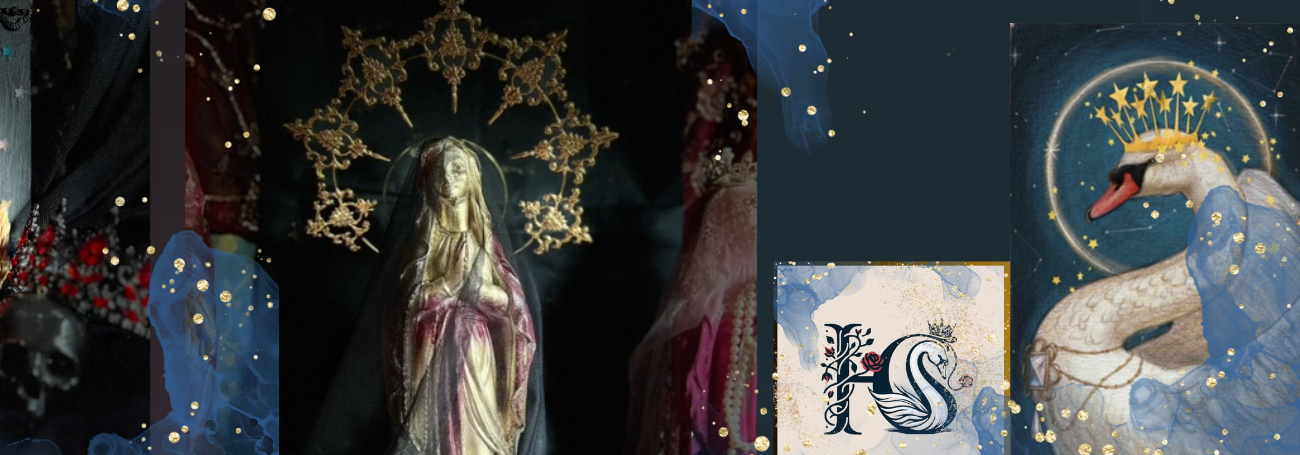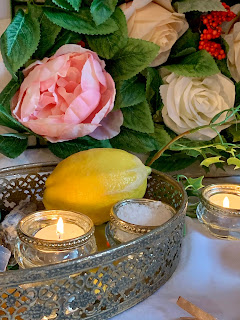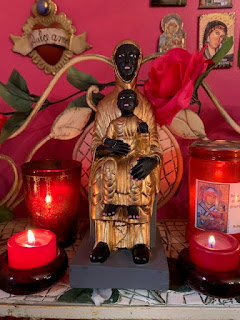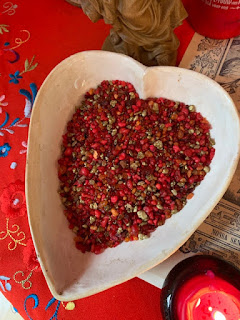From Mara to Miriam, from Miriam to Mariam and Maryam to Mary.
She is the archetypal Divine Woman of our times.
Mary is the bridge
between the mortal and immortal feminine.
She is the Sacred Virgin and Mother, Beloved Bride
and Lady Wisdom.
‘Whoever knows the spiritual secrets of the world and knows what speaks through
Isis and Madonna sees in them something of primeval life, something much more alive
than whatever one can express in any slaving imitation to a physical human model.
A person of this kind whose gaze penetrates to the living quality of the Madonna
as through a veil, beholding the spiritual behind her, can feel piety in
complete spiritual freedom, free from all dogma and prejudice. Such a person
will unite science, or wisdom, with art in his or her soul and give new birth to genuine
free religious feeling‘ – Rudolph Steiner
According to the Ageless Wisdom and great seers like Rudolph Steiner and Helena Blavatsky, the Grail knowledge (esoteric and hidden knowledge of the new era of divine love) began to flow into the consciousness of humanity 2000 years ago. This new consciousness has the ability
to transform wisdom into love. Through love outer wisdom becomes inner wisdom.
The transformation of wisdom into love is an action. It can be seen as a passionate on-going relationship with another being. In the case of the spiritual vision it is seen as a Feminine
Being and the transformative power of your love for Her. This is called Bhakty (devotion) in
Tantra Yoga (the sacred tradition of the mystical marriage).
The thirty days of Walking with Mary practises is part of the Yoga of the Mother in the
Bhakty tradition
of devotion to Our Lady Mary.
The poet Dante had a great love for Lady Philosophy. Dante’s relationship with her
was no mere allegory.
It was a concrete experience of a passionate relationship with Lady Philosophy.
For Jacob Boehme the incarnation of Sophia in Mary is central to Sophiology ;
‘Sophia was above all chosen and sent to unite herself with Mary and to
strengthen her, so that she would be able to become the mother of the
Incarnating Logos. She incarnated into Mary; Mary is the incarnated Sophia.’
But Christianity, by insisting on the chastity of the Mother Goddess, utterly
transformed the meaning of the matriarchal image even though to all outward appearances
it remained unchanged. The image of the Mother Goddess with her child
represented her sexuality and procreative power, whereas that of the Virgin
and child stood for her celibacy and the will of God.
She was merely the agent through which he acted.
But early on, many women and men felt differently. They paid homage to
Mary by customary offerings to Goddess. The church, aware of the similarities
of Mary with Goddess, converted existing temples and shrines and adapted
rituals into its own devotional calendar.
Thus Mary seemed to belong to the Roman Catholic Church and early on she was
even there side-lined into a minor role.
She was virtually removed from the Protestant Church.
Mary’s most common personifications in the liturgy and in art are
Virgin, Mother and Queen (reminiscent of the Triple Goddess ).
‘Mary’ is a Greek pronunciation of the Hebrew name Miriam
or Miriamne. There are many theories about his name, such as that Mary
might not even be a personal name, but a title meaning Priestess.
In the age of the troubadours, Mary was
praised as the object of courtly love, the untouchable beauty to be praised above
all others. Many paintings of this era portrayed Mary as a sensuous woman.
Offering of love to her were common. One legend tells of a man who gave
Mary a crown of 50 roses every day.
Monks and priests used to wed Mary. Hopeful knights were known to
place a ring on Mary’s finger. If the statue gripped the ring firmly, the knight
considered himself her Bridegroom and entered a religious order. In Greece,
men who worshiped Venus performed the same ritual. Venus was also known to
firmly grip the rings of the men she loved.
In the annual Thirty Days of Mary I share ritual and initiation with you;
practises and a spiritual path that I wrote down in a state of bliss for hours
through the night. I had followed a path of tantra yoga and had received
various initiations. During my visit to Lourdes I felt deeply called to marry
the eastern tradition of bhakty with the western tradition of pilgrimage
within myself and my spiritual path.
(You will find more posts on my story on my blog Cloister of the Heart)
The pages that I had written down that night, contained a complete guidebook
for a spiritual community devoted to Mary.
I founded the Temple of Mary and initiated Flamekeepers to maintain
the fire in the Hearth of Mary.
Working on the tarot deck of the Mysteries of Mary and my
pilgrimages I withdrew deeper into my spiritual path
and realised that I cannot burn the candle on both ends.
My vision is to continue to offer the Thirty Days with Mary
to all those who work with the deck and that each year the
thirty days retreat will deepen and expand.
When you have completed the Thirty Days you
are a Keeper of the Hearth and you can continue
to keep the flame burning.
For those who would like to continue the journey and become
a Flamekeeper, I will be introducing the initiations on Patreon
later this year.
blessings
Hettienne
Sri Hettienne BhaktyMaria Ma







